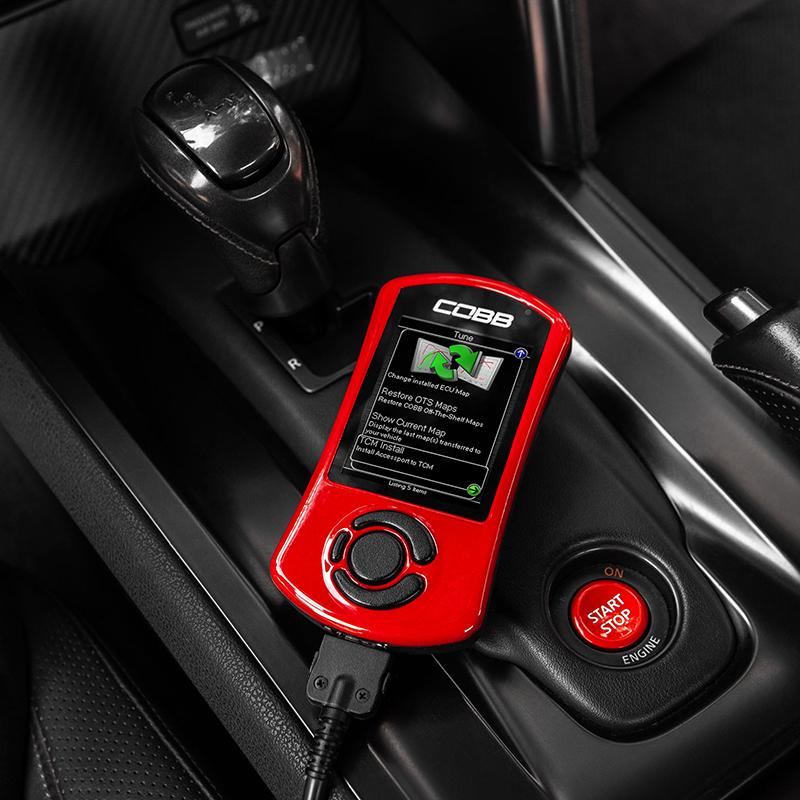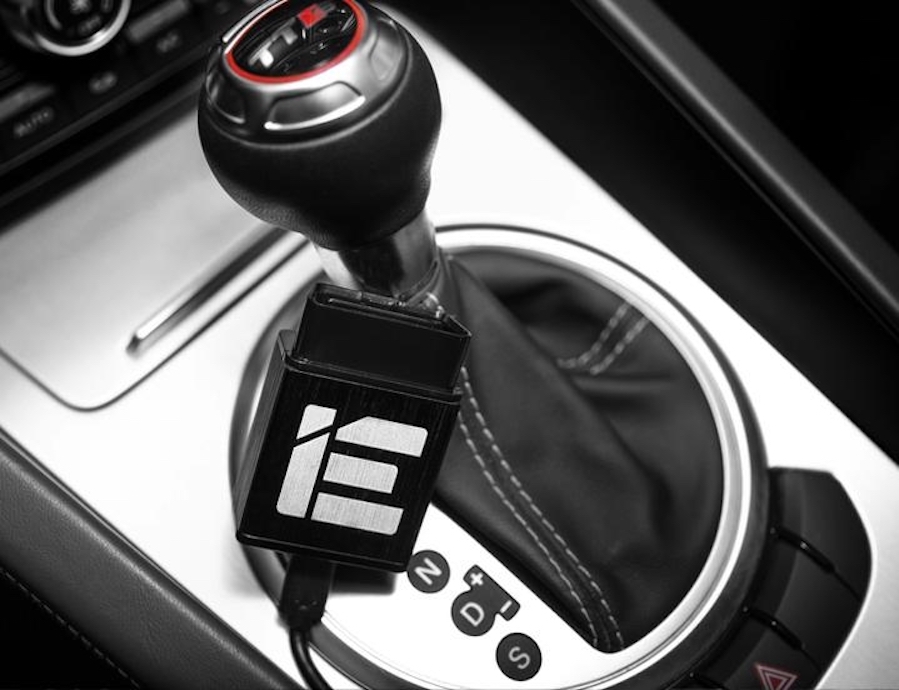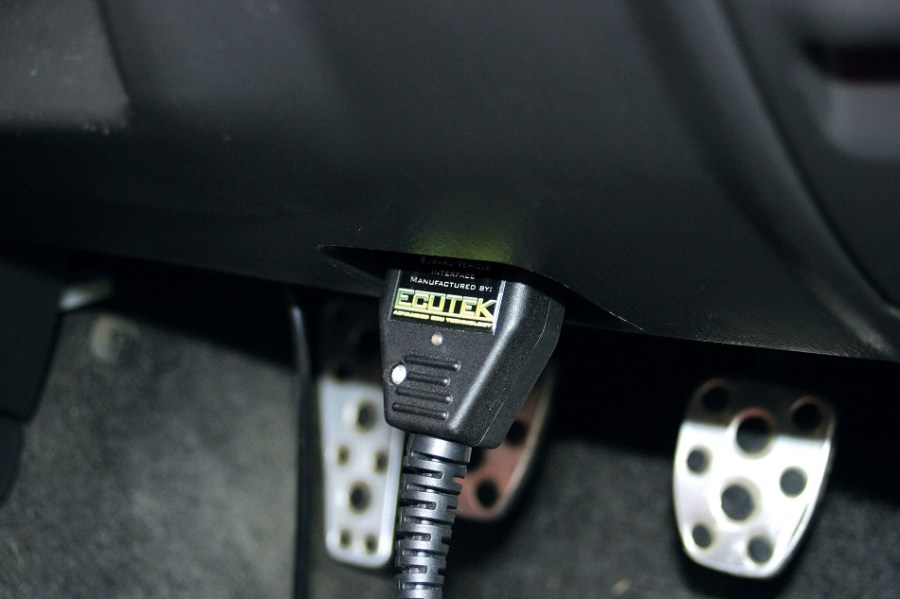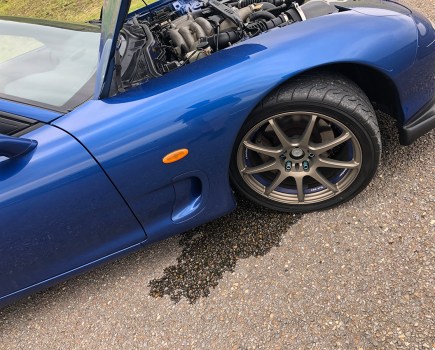While it was intended for diagnostic purposes, your OBD2 socket has a much more fun use too; performance ECU tuning!
Ever since the OBD2 system was first designed, its primary goal from the perspective of manufacturers and law makers is emissions-based. Both for testing emissions and for fault finding issues that could adversely affect emissions, this was the main purpose for the system, and anything else manufacturers added was simply optional. But thankfully there’s a lot more potential around OBD2 scanners, and one of them is making your vehicle faster!
While the capability and potential will vary wildly between different makes and models, the OBD2 plug is the key to literally every ECU-connected component of your car, so if you have the right knowledge and equipment, all of those parts can be modified in ways most people would never expect.
Part of the reason this is possible is the simple fact that the OEMs use the OBD2 port to update things on the car when a known issue is found, sometimes important factory recall issues, and sometimes simply when the car comes in for a service and an update is available. And of course, if they can use it to modify the ECU programming, potentially anyone else can too. That’s where OBD2 ECU tuning comes in.
OBD2 ECU reflash
The quickest, cheapest, and most basic form of OBD2 ECU tuning is when you pay for someone to reflash your ECU. Sometimes this is done by a mobile service that can come to your home or work, sometimes it’s done at a premises, and sometimes even done on the dyno with before and after results. Regardless of where it is done though, the overall job is basically the same.
Using their specialist hardware and software specifically for this purpose, they can upload a differently programmed tune on to your cars ECU. Most commonly these are what people call “Stage 1” remaps, and are suitable for otherwise standard cars, but depending on the car and tuner there can be other tunes for certain popular upgrade routes.
Often these basically generic reflashes are sold as ‘custom’ remaps, but they are rarely truly custom as there is little need on a relatively standard car, and at most they are a slightly optimized version of the original “Stage 1” tune. This kind of ‘custom’ map is a very different thing to someone who truly has the ability to custom tune your ECU to suit a more highly modified engine with different injectors, larger turbo, and so on.

DIY flash programmer
If you’re unable to, or simply don’t want to travel to a suitable tuner, a great DIY option is the various plug-in OBD2 programmers such as the Cobb Accessport, Superchips Bluefin, Dreamscience, and many more. While exactly what’s possible depends on the unit and the car, these allow at very least for the owner of the car to upload the supplied modified ECU to their car themselves, and potentially can go far further than that.
These can be used to datalog the car on the road or dyno, and that log can be sent to a tuner anywhere in the world, who can custom modify your tune to suit your cars upgrades. Often this involves doing a log, uploading a modified tune made from that logs data, then doing another log, and so on until the desired result is achieved, much like how a lot of remapping businesses do their own ‘custom’ tunes, but while cutting out the middle man.
Custom OBD2 ECU tuning remap
While not needed for mild power levels, the ultimate form of ECU reprogramming is a full custom map done by an expert tuner. This is most commonly done on the dyno, but can be done on the road or even remotely. The two main things it needs is a factory ECU that’s capable of being fully custom tuned, and a tuner who knows exactly how to do it. Not all vehicles can have their factory ECU custom tuned. In fact, far more are incapable than capable, hence the need for an aftermarket ECU for most highly tuned engines. However, there are some notable exceptions.
Nissan GT-Rs, despite having “un-hackable” electronics when first released, can be highly tuned via the OBD2 port and the factory ECU; as do a lot of other popular performance engines. One of the most interesting is 01-05 Subaru Imprezas, which, thanks to many abilities being hidden away within the ECU for use in Group N rallying, has an incredibly capable ECU when used in conjunction with software such as CarBerryROM. The factory Subaru ECU has all kinds of wild rally functions hidden inside that even many aftermarket ECUs don’t have. These include rally anti-lag, launch control, rotational idle, multiple maps, and much more. It even allows you to use the factory interior switches that normally control things like the heated rear screen to instead switch the anti-lag on and off, to change maps, and so on.
A full custom remap is not a DIY job unless you’re skilled in this, and is indeed way beyond the capabilities of most tuners or even generic remap businesses. If you’ve got a highly modified car and know the right tuner, you may be able to meet your goals on a highly modified engine without changing to an aftermarket ECU.

OBD2 transmission remap
The engine isn’t the only thing that can get its performance increased via OBD2 port programming, certain transmissions can too. While it’s not a thing for a manual gearbox of course, as you’re fully in charge there, for some automatics, and especially dual clutch gearboxes such as the VW/Audi DSG, Porsche PDK, BMW DCT, Nissan GT-R, and so on, custom reprogramming for various upgrades can be done, potentially transforming how the car performs.
Different up and downshift rpms when in full auto mode, harder and faster shifting, improved launch control, higher torque limiters, and much more, can all be changed via a OBD2 remap of the transmission control unit. Perhaps most usefully, especially for the dual clutch setups, higher hydraulic pressure can be programmed in, which on some transmissions drastically increases the clutch clamping capacity, preventing slip even with large engine power and torque upgrades.
Just like the engine tuning, this can be done via generic reflashes, plug in modules, or as part of a full custom tune if required.
Non-performance OBD2 changes/upgrades
It’s not just performance modifications that can be done via OBD2 reprogramming, either. There is a whole host of cosmetic and comfort changes that be done on many cars in this way too. Modifying the function of interior and exterior lights, dashboard functions, adjusting the function of things like lane assist, your aircon, your audio system, in fact practically every function that is connected to the OBD2 system on your car can be adjusted IF you got the software and knowhow to do it.
As with the performance upgrades, what’s possible varies massively car to car, and just like them, you can either go to a specialist to get these changes done, or you can buy something such as Carly, which is partly a mobile-based diagnostics app and Bluetooth OBD2 module, but also allows you to unlock various changes and upgrades to your cars various electronic systems.
Relevant content:




